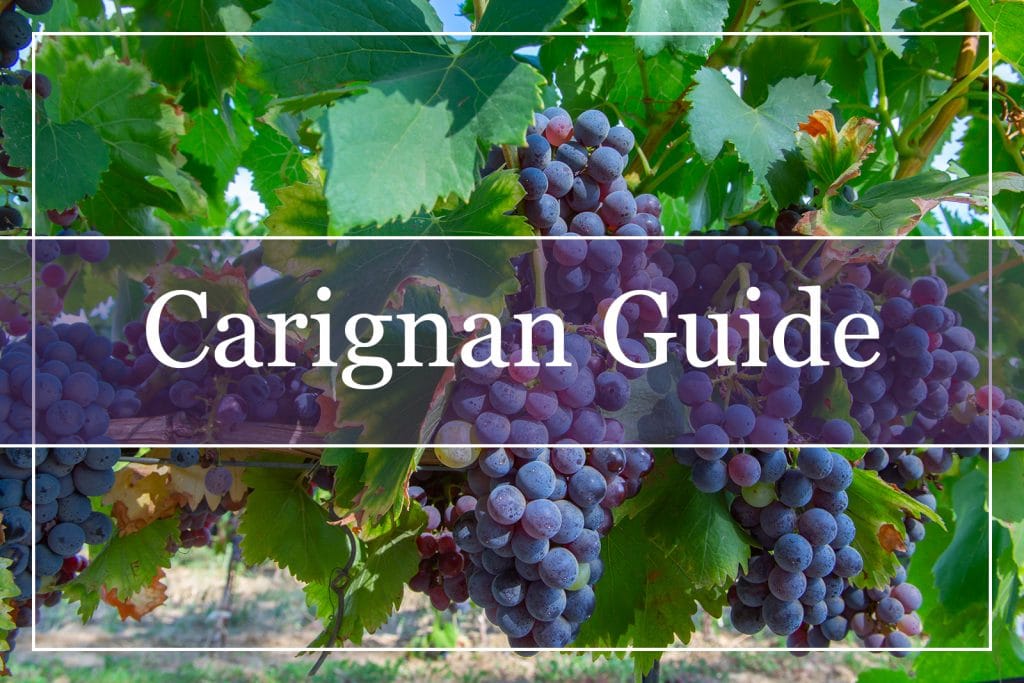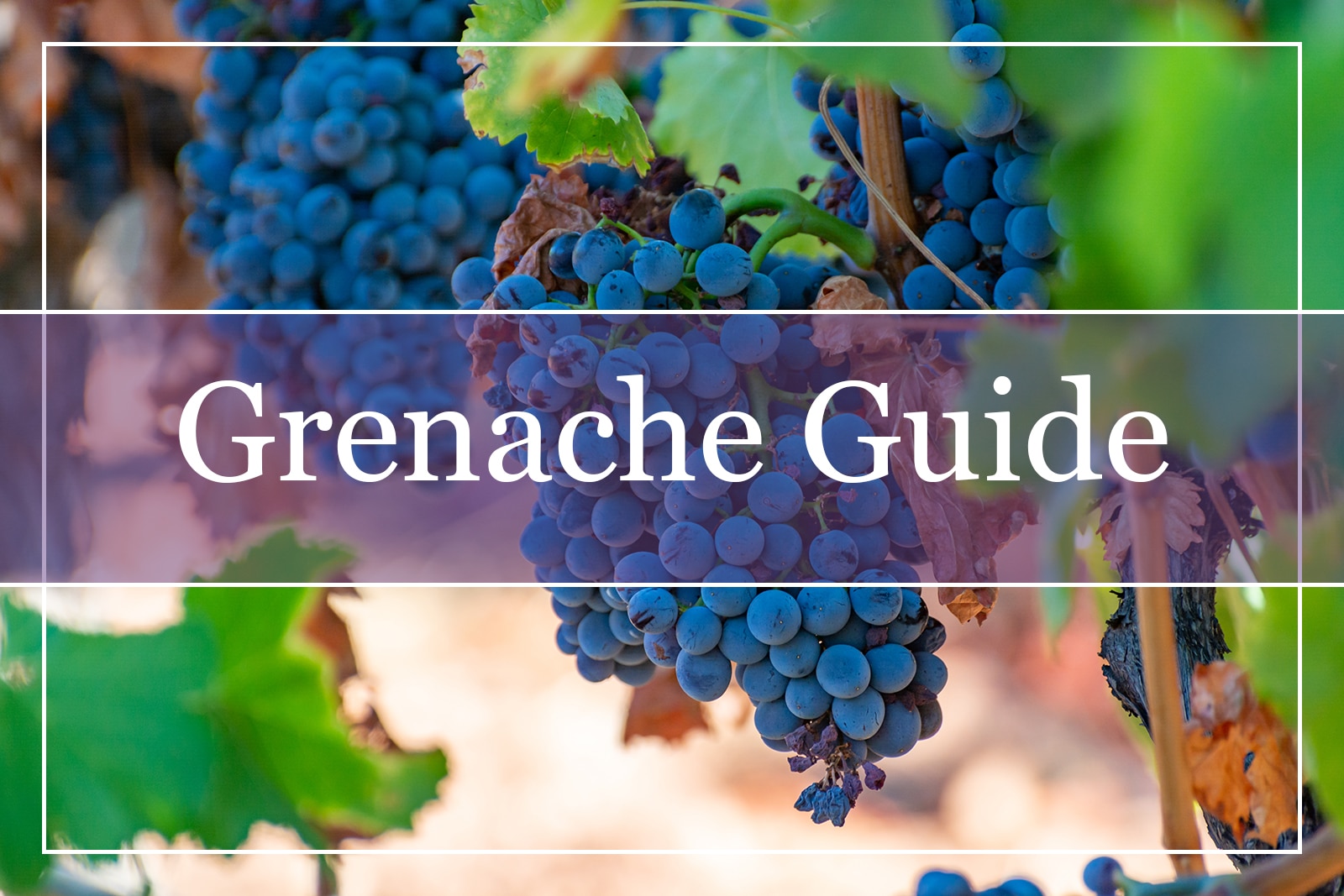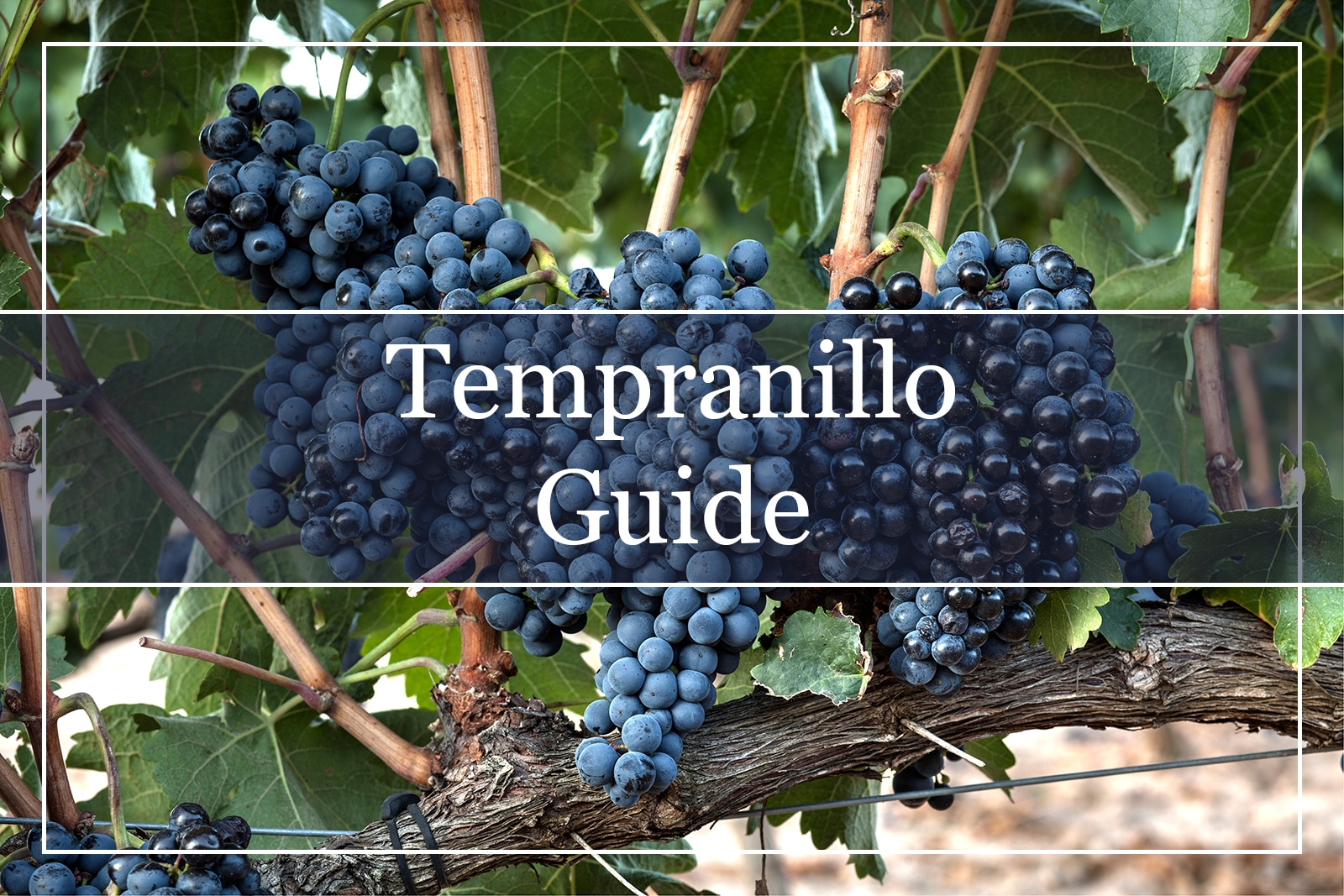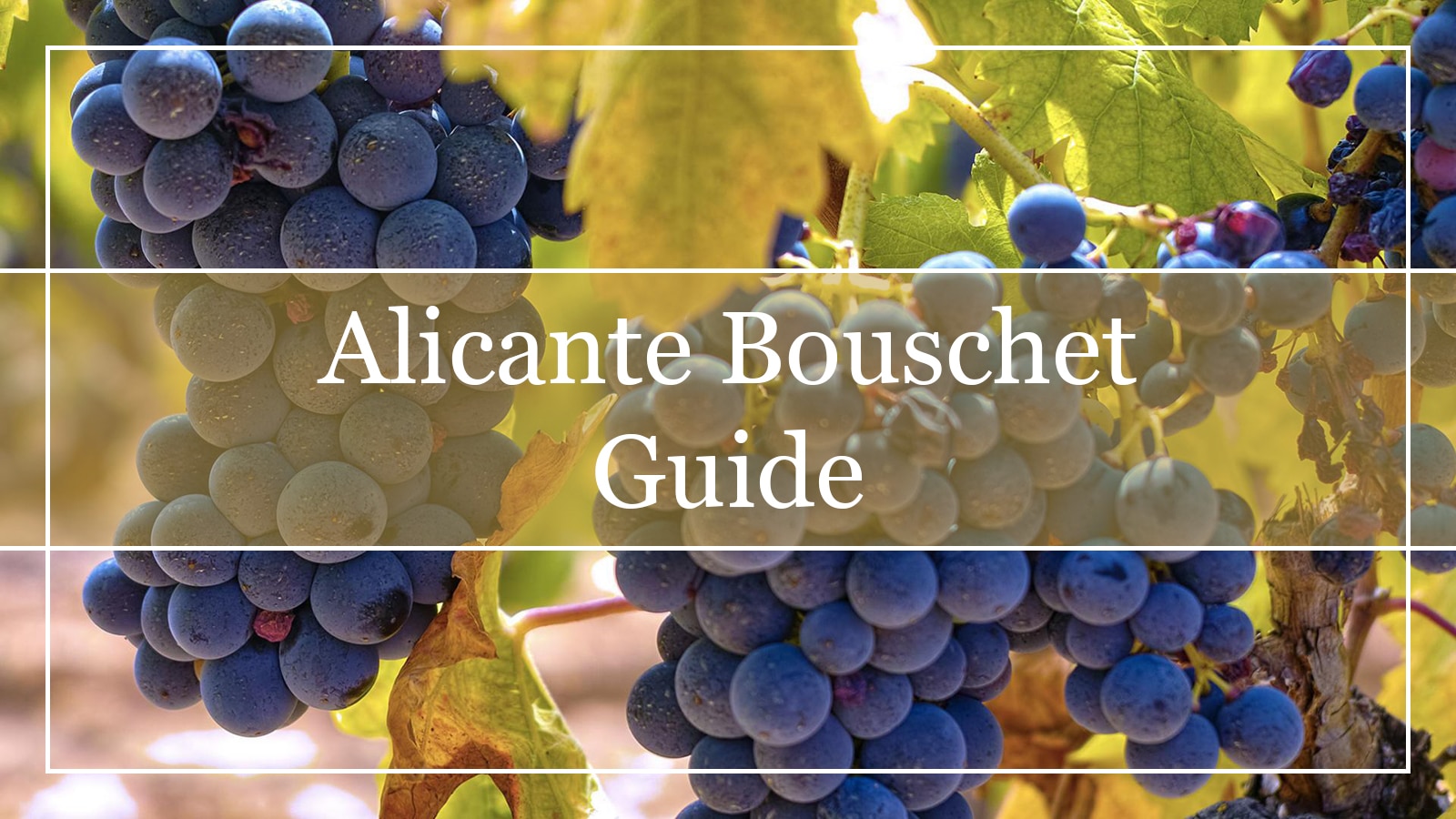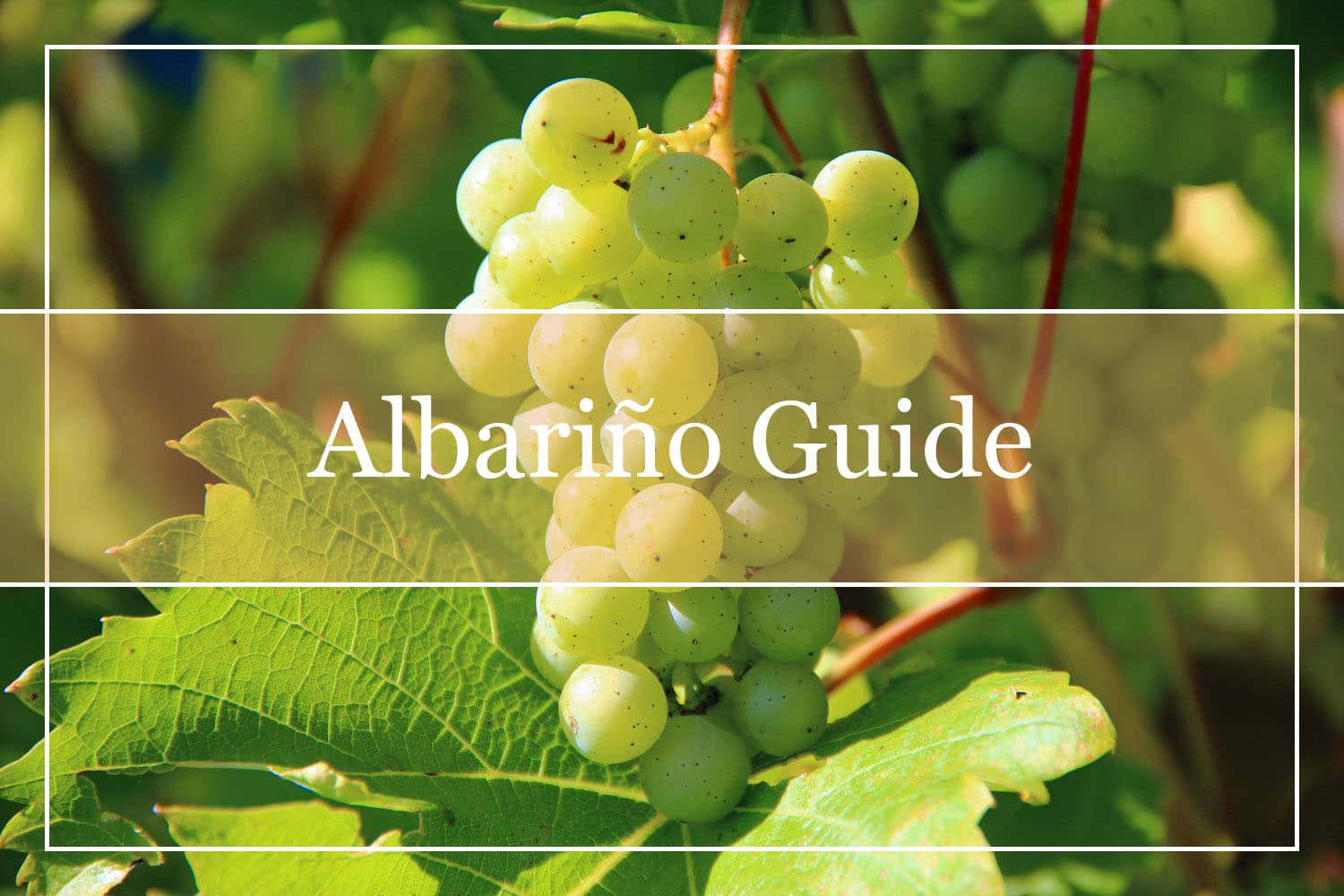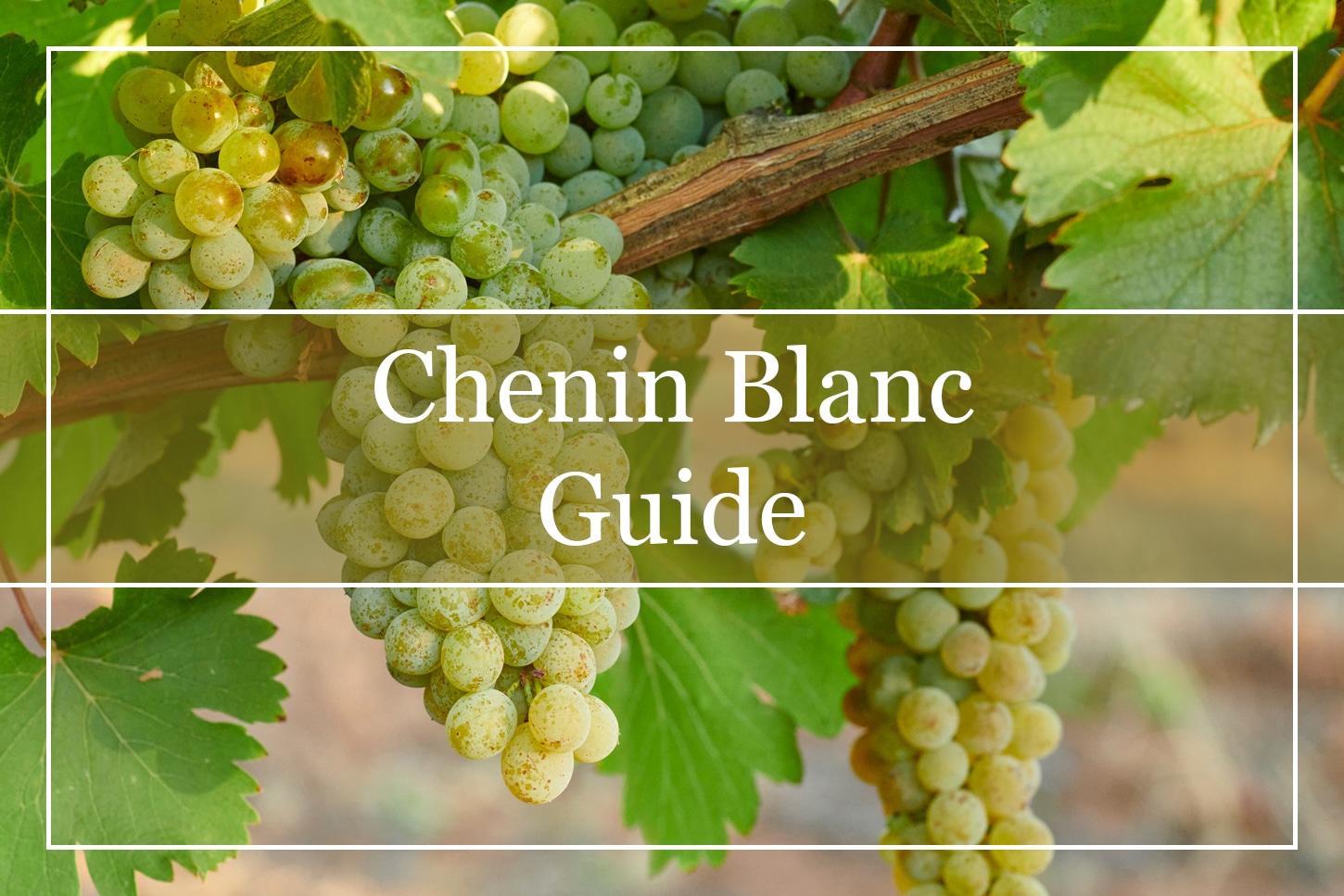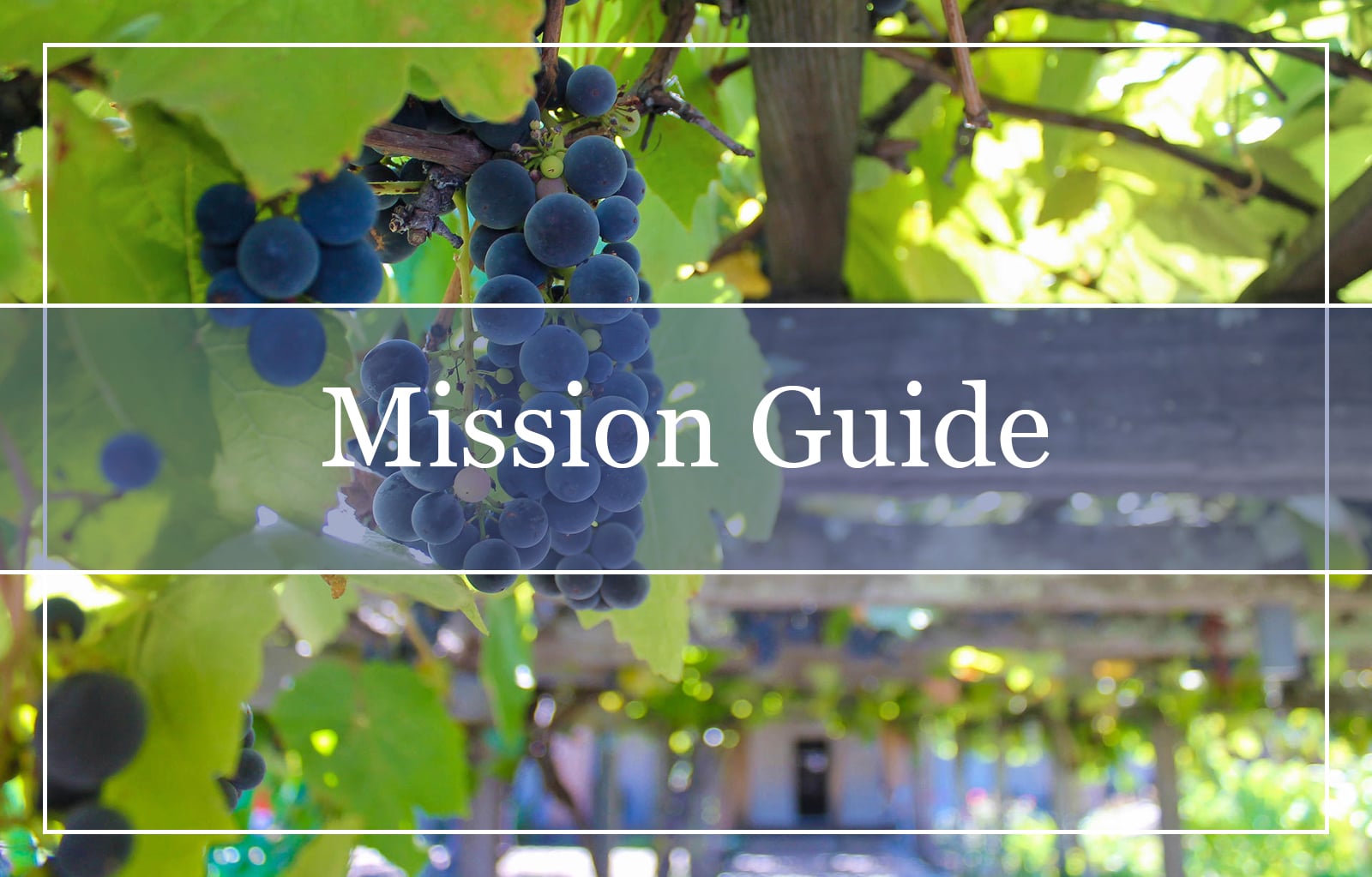What Is Carignan?
Carignan or Cariñena in Spain (also Cariganen in the United States) is a thick, black-skinned grape variety native to Aragon in Northeastern Spain. Also, it is found in the Languedoc-Rousillon region in Southern France. There, Carignan blends with Grenache. However, the wines vary in style, depending on grape ripening and the vineyard climate. Most wines, though, tend to have a spicy character reminiscent of the local herbs. Carignan, therefore, favors growth across the Mediterranean coastline.
Dry, warm climates are ideal for Carignan plantings, as they allow the grape to express high acid, intense color, and robust tannins. For this reason, Carignan is an incredible blending component in wines which need to uplift their aromas and flavors, as it becomes the structural backbone, contributing body and color.
Carignan is grown as a bush in most cases. However, some vines are old, requiring hand-harvesting because the stems are too hard for machines. Carignan is also a late-ripening varietal that gives high yields with limited flavor intensity. There was a time that large crops were considered an attractive characteristic of the variety, but since flavor concentration is crucial, wine-growers started to think otherwise. To solve the high yields issue, they begun to put extra effort and properly crop the Carignan vines.
The grape is rarely produced as a single-varietal wine. That said, if 100% percent Carignan wine is produced, it shows notes of black and red fruits, touches of licorice and pepper, and baking spice hints. The Carignan characteristics, therefore, are similar to Grenache or Mourvèdre, albeit a bit less refined. As a medium-bodied red wine, Carignan is zesty and quite dynamic. An ideal beverage to enjoy on a trip along the Moroccan shores.
What Color Is Carignan?
Carignan yields large bunches of thick-skinned fruit with an attractive purple-bluish hue. The grape belongs to the Vitis vinifera variety of the Eurasian grape species. In fact, most grapes used in wine production are family members of the Vitis vinifera. Until ‘véraison’ and berry ripening, Carignan grapes feel hard and thick when you touch them. ‘Véraison’ signals the point at which the grapes begin to ripen. At this time, the grape’s skin changes color, with Carignan grapes turning from blue to purple.
Between ‘véraison’ and harvest, grapes swell and fill with water. During ripening, sugar levels rise, and acid levels drop. Color pigments and flavor components accumulate. Warm and sunny conditions are ideal, while mild water stress inhibits soot growth, encouraging grape ripening. It is then that the Carignan color exhibits a wonderful color palette ranging from bluish to purple to even indigo. A walk in a Carignan vineyard in Aragon will convince you that the Cariñena grape is one of the most beautiful in existence.
What Does Carignan Mean?
The first known use of Carignan was as Carignane in 1876. The name derives from a town near Bordeaux in France called Carignan. It seems that it always meant inexpensive red wine.
As to Cariñena, it is the Spanish name for Carignan. Most possibly, the name derives from a region of Spain that neighbors Cataluyd in the south of Ebro. Originating in the Aragon region, Cariñena might also have been named after Cariñena, a town located in the Zaragoza province.
How to Pronounce Carignan?
Carignan pronunciation must be a matter of concern for those who wish to enter wine-tasting circles but are not native French speakers. There are many helpful audio and video examples of how to pronounce Carignan online. The word has three syllables, and the emphasis falls on the first syllable. Here what it looks like phonetically:
kah-ree-nyah~
Carignan is associated with Cariñena. It is imperative, therefore, to learn to pronounce the Spanish name of this wine, too. There are four syllables in the word, and the emphasis falls on the second syllable. Phonetically, Cariñena looks like this:
cah-reen-nye-nah
Where Does Carignan Come From?
Carignan comes from Spain and specifically Aragon. That said, Carignan is found across the Mediterranean coast, such as the Languedoc-Roussillon wine region in France or around other Spanish provinces, too.
In France, the grape used to be the most-planted varietal from the middle of the 20th century. In the 1980s, however, vine-pull schemes halved the total plantings of the grape. Almost three-quarters of Carignan is in the Languedoc-Roussillon. There, the grape is produced as a varietal, Vid de France, table wine. More often, though, Carignan is blended with Grenache, Syrah, Cinsaut, and Mourvèdre.
In Spain, Cariñena is one of the most important grape varieties. It is grown in Priorat where it is blended, as in France, with Garnacha (Grenache) to enhance the tannin structure of the wines. Furthermore, in Rioja, Cariñena is called Mazuelo and gives wines that are high in acidity, tannin, and color. A small proportion of Cariñena makes an ideal blend with Spain’s signature wine Tempranillo.
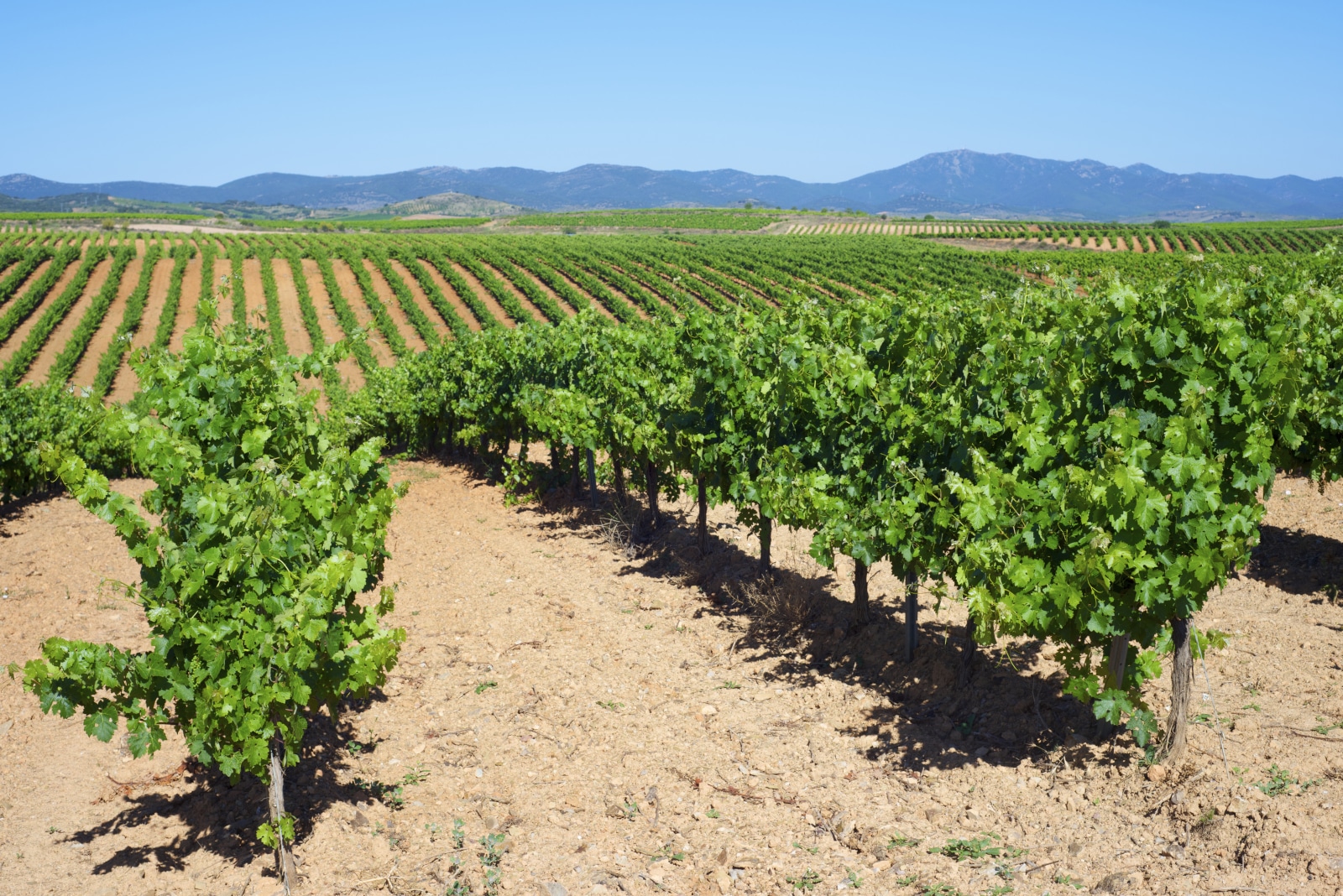
Cariñena is also a region in Spain close to Cataluyd in the south of Ebro. It has a warm continental climate and low rainfall, which are ideal conditions for successful Cariñena plantings. However, Garnacha is the main variety of the region. There, though, wine enthusiasts will see some of the most high-quality Cariñena wines, made from old vines, displaying great flavor intensity and structure. A fun fact is that Cariñena is not the most widely planted in the Cariñena region, despite sharing the same name.
Outside France and Spain, Carignan has noticeable growing areas on the Italian island of Sardinia. The grape is named Carignano, and the hot Mediterranean climate is fantastic for old Carignan vines planted there. Carignan gives wines valued for their spiciness, richness, and boldness. Further, on the island, two grape varieties seem to be distinct Carignan clones. These are Bovale Grande and Bovale di Spagno, previously thought to be related to the Bobal varietal.
In California, Carignan is known as Carignane, and it is used as a red blender. Chile also has Carignan plantings that have sparked the interest of wine fans and enologists over the last few years.
What Kind of Wine Is Carignan?
Carignan vines are naturally productive. So winemakers, producing single-varietal Carignan wines, favor fruit from old vines where the grape productivity is low. The wine is similar to a lighter version of Merlot or Zinfandel and reminds a Côtes du Rhône blend. Carignan wines are packed with black and red fruits and have a smooth, plush taste with robust tannins. They are less bitter than those found in a Cabernet Sauvignon or Cabernet Franc. As a well-rounded red wine, Carignan is perfect for formal occasions or at a casual barbeque party.
Is Carignan Dry or Sweet?
It is not hard to pin Carignan down to a specific tasting profile. It is a bone-dry wine, and even though the flavors in wines depend on the wine maker’s experience and the inclination of the vineyards, that is not the case with Carignan. The grape has a standard, black-and-white character. It is characterized by high acidity, robust tannins, medium-to-full-body, and intense fruitiness, always.
That said, vineyards with an inclination towards the sun will produce Carignan wines with juicy, overripe black fruit notes. But still, due to the high plantings of the grape, the flavors might feel bland without energy or dynamism.
What Does Carignan Taste Like?
Carignan has a balanced flavor profile. The wine is fruit-forward, full of black and red fruit aromas and flavors. Carignan’s aroma shows gentle floral notes that contain touches of rose petal, violet, and honeysuckle. Blackberry and blueberry hints are present in the nose, too, while tones of clove and vanilla spice contribute aromatic depth.
Carignan has a wealth of plum, cherry, strawberry, and raspberry elements on the palate. Meat and bacon notes also exist, but they are somehow muted compared to a Grenache or an aged Cabernet Sauvignon. The tannins are robust and grippy and offer a pleasant crunchy sensation. Single-varietal Carignan wine shows high acidity that is both refreshing and crispy.
Carignan had a reputation for being a low-quality table wine or only being used in red blends consumed as a day-to-day dinner beverage. But in recent years, Carignan has gathered attention, becoming something to bring out on a special occasion. Consequently, complex examples are produced, especially in the United States, delivering a rich palate and maximum fruitiness. In this way, the Carignan tasting notes can range from straightforward to complex.
How to Serve Carignan?
Carignan is best served when it still young or after having aged for a maximum period of two to three years. The vibrant flavors and rich texture are fantastic to accompany social gatherings with family, friends, or office colleagues. This wine will be appreciated by any red wine lover, let it speak for itself and pour it into a beautiful decanter!
The best temperature to serve Carignan is 60°F or 15-18°C. The reason for this is that if medium-bodied reds become too cold, they taste thin. Whereas, by reaching higher temperatures than recommended, they see their freshness decreasing. Eventually, the flavors become muddled, resulting in an ordinary and uninspiring beverage.
Furthermore, Carignan wine has to be served into larger-sized wine glasses to allow the air to come into contact with the surface of the wine, encouraging it to release its intense aromatics and flavors. Decanting the wine is also a good option, as Carignan will benefit from the additional aeration, making it even more impressive.
Should Carignan Age?
That depends on the buyer. It certainly can withstand maturation and will be fine for no more than three years if stored in an environment with a standard temperature that does not fluctuate, away from odors and intense light.
How Long Should Carignan Breathe?
Carignan is a medium-bodied red wine. As such, it will benefit from receiving aeration. In fact, as you uncork the bottle, Carignan may smell meaty, which might not be pleasant for some. Therefore, decant the wine, giving it time to settle and breathe for at least an hour before serving. The air will help to revitalize its secondary and tertiary flavors and aromas, granting a gratifying wine-drinking experience to wine fans.
What Food to Pair With Carignan?
Carignan is a versatile and easy wine to pair with a variety of courses. It has a well-balanced flavor profile without bitter, obtrusive tannins. It therefore tends to act as an additional ingredient when combined with hearty food. Because it is medium-bodied, it can also match nicely with rich dishes and with a good cheese board, too. To elaborate, Carignan is amazing as a Thanksgiving wine like Grenache, Pinot Noir, and even Beaujolais.
Accompany Carignan with rich poultry dishes, such as turkey and duck, stewed veal, or even roast pork. The powerful red fruit and earthy notes of Carignan blend superbly with the boldness of the veal and pork meat, while the star-anise and cinnamon spice flavors complement the tenderness of the poultry.
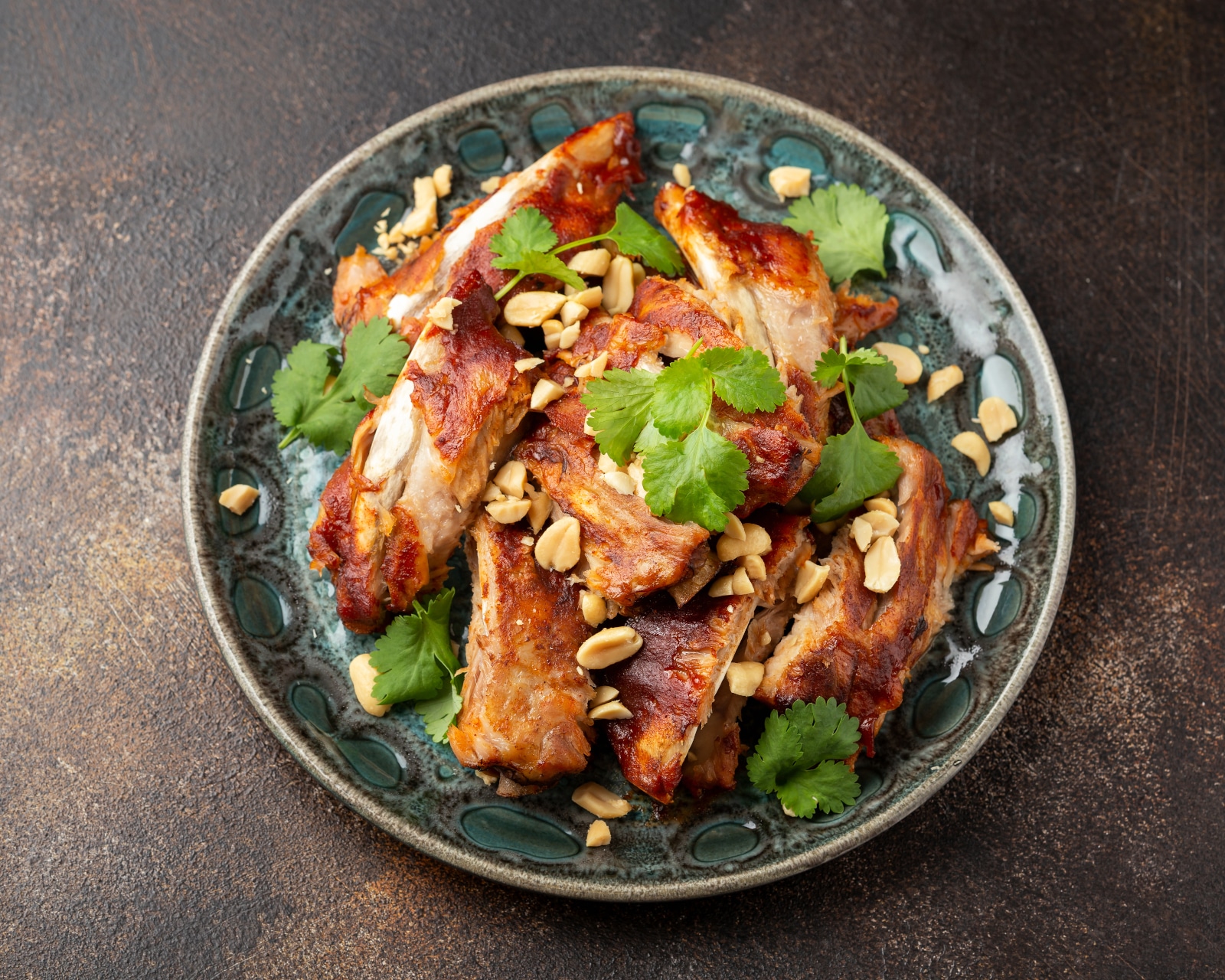
Remember to add curry, cumin, dried herbs, such as dill and oregano, flavorings to dishes while cooking to expand on the spicy nature of Carignan. Therefore, feel free to use herbs abundantly with foods that you are going to pair with Carignan. Clove, cumin, rosemary, thyme, red pepper flake, Moroccan ras el hanout, and coriander are some of the spices you could add to enhance your food pairings.
On that note, Carignan also goes with vegetables, including pumpkin, tomato, eggplant, butternut squash, shallot, and roasted leek. Japanese shiitake mushrooms and wild rice taste divinely with Carignan. Consequently, a chicken wild rice casserole stuffed with shiitake mushrooms or pork chops with tomato gravy and squash taste extraordinary when joined by a glass of Carignan.
Carignan Cheese Pairing
This red wine is tasty with creamy or semi-hard cheeses made from cow’s or sheep’s milk. Try it with Basque, aged Gouda for a smoky texture, Parmesan, or Manchego. The cheese might be served as a cheese board with crackers, baked, or as a part of a pepperoni pizza, creamy pasta carbonara, or cheese fondue. To sum it up, pair Carignan with whatever cheese you may fancy!
How Much Alcohol Does Carignan Have?
Carignan’s alcohol content is in the range of 12 to 13.5% ABV. That is typical of medium-bodied dry red wines. Check the label on the bottle before purchasing to be more precise, and enjoy the wine responsibly with moderation.
How Many Calories Are There in Carignan?
Bear in mind that alcohol equal calories. It is the component that increases the caloric density in alcoholic beverages, including wines. However, Carignan is a safe dietary choice. The carbs in Carignan range from 3 to 7 per glass, while the calories are 112 to 122 per serving. Because the calories are low, wine fans on a diet can enjoy Carignan without guilt.
Conclusion
Carignan is a fantastic grape varietal that does not get the attention it deserves from the wine-making world. With sweet-smelling floral notes, flavors of black and red fruits, a silky texture, and a high acidity, Carignan is a ‘one-of-a-kind’. The subtle spiciness and the balanced fruitiness makes the wine an ideal red blender. But when made as a single-varietal wine, Carignan turns into reliable red with dynamic foundations. If one thing is certain, exploring new old favorites is a joy exclusive to oenophiles!

